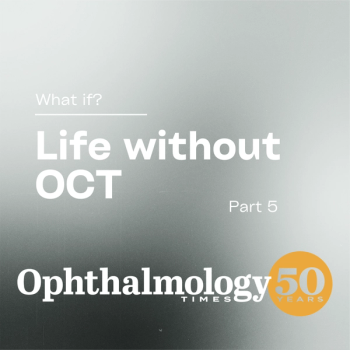
Aberration-free lens outperforms two other lenses
An aberration-free aspheric silicone IOL, performed better in eliminating spherical aberrations than two other silicone IOLs, one a conventional spherical IOL and the other an aspheric IOL with a prolate anterior surface and a spherical posterior surface.
Key Points
In this study, the investigators used a ray-tracing program to determine how IOL decentration affected the optical performance of the three lenses. The aberration-free silicone IOL has an aspheric anterior and posterior surface that "maintains an excellent optical transfer function, is neutral to the induction of positive or negative SAs, and does not induce significant higher-order aberrations (HOAs), even when the lens is decentered," the authors reported in the Journal of Cataract and Refractive Surgery (2005;31:574-585).
Two other lenses (LI61U, Bausch & Lomb; Tecnis Z9000, Advanced Medical Optics) were used in this study. The former is a conventional IOL with spherical anterior and posterior surfaces, and the latter is an aspheric lens with a prolate anterior surface and a spherical posterior surface. The conventional IOL has positive inherent SA, the investigators explained, whereas the other lens has negative SA intended to offset the positive SA in the cornea.
Performance in eye model
The SofPort AO IOL outperformed the other IOLs. Generally, decentration of the lens did not affect the performance of the eye model because of the absence of SA in the IOL. Decentration of the other two IOLs resulted in asymmetric HOAs that affected the eye model, the investigators reported.
When considering the three pupil sizes, the SofPort AO IOL also performed better compared with the other two lenses.
With the 3-mm pupil, the results showed that when the SofPort AO IOL was decentered by 1.0 mm, the performance of the eye model exceeded the performance when the LI61U IOL was perfectly centered in the model. This was also true when the SofPort AO IOL was compared with the Tecnis lens and the latter was decentered by 0.15 mm. Under the same conditions, the Tecnis IOL outperformed the LI61U IOL with decentration of less than 0.3 mm.
With the 4-mm pupil, the problems created by the SAs and the IOLs were worse compared with the 3-mm pupil. With perfect centration of the IOLs, "the authors found that the performance of the eye model with the Tecnis IOL was diffraction-limited by design." With SofPort AO IOL, the performance decreased because of the corneal SAs. The performance was the worst with the LI61U IOL because of the positive SA of the IOL.
Newsletter
Don’t miss out—get Ophthalmology Times updates on the latest clinical advancements and expert interviews, straight to your inbox.



















































.png)


